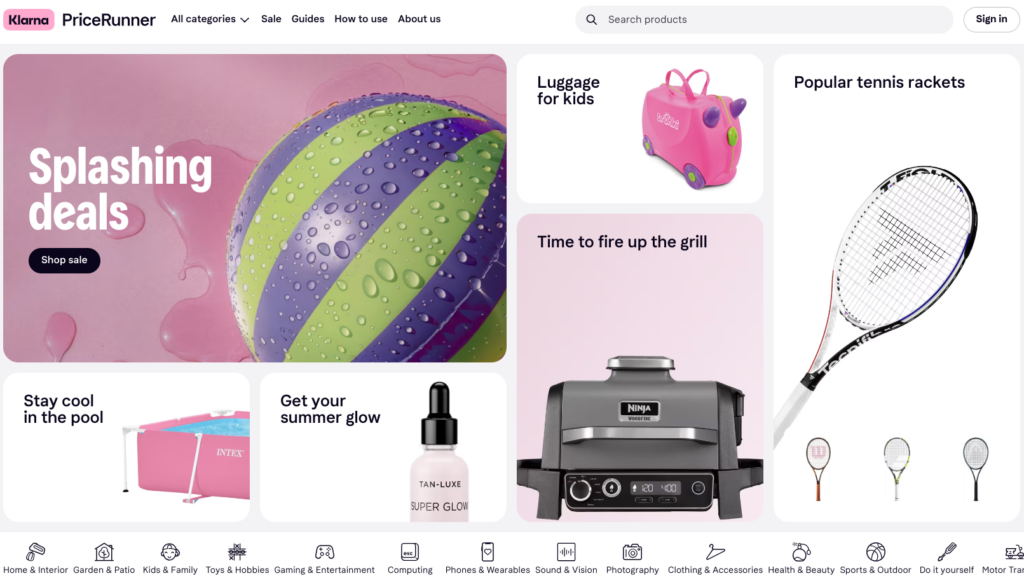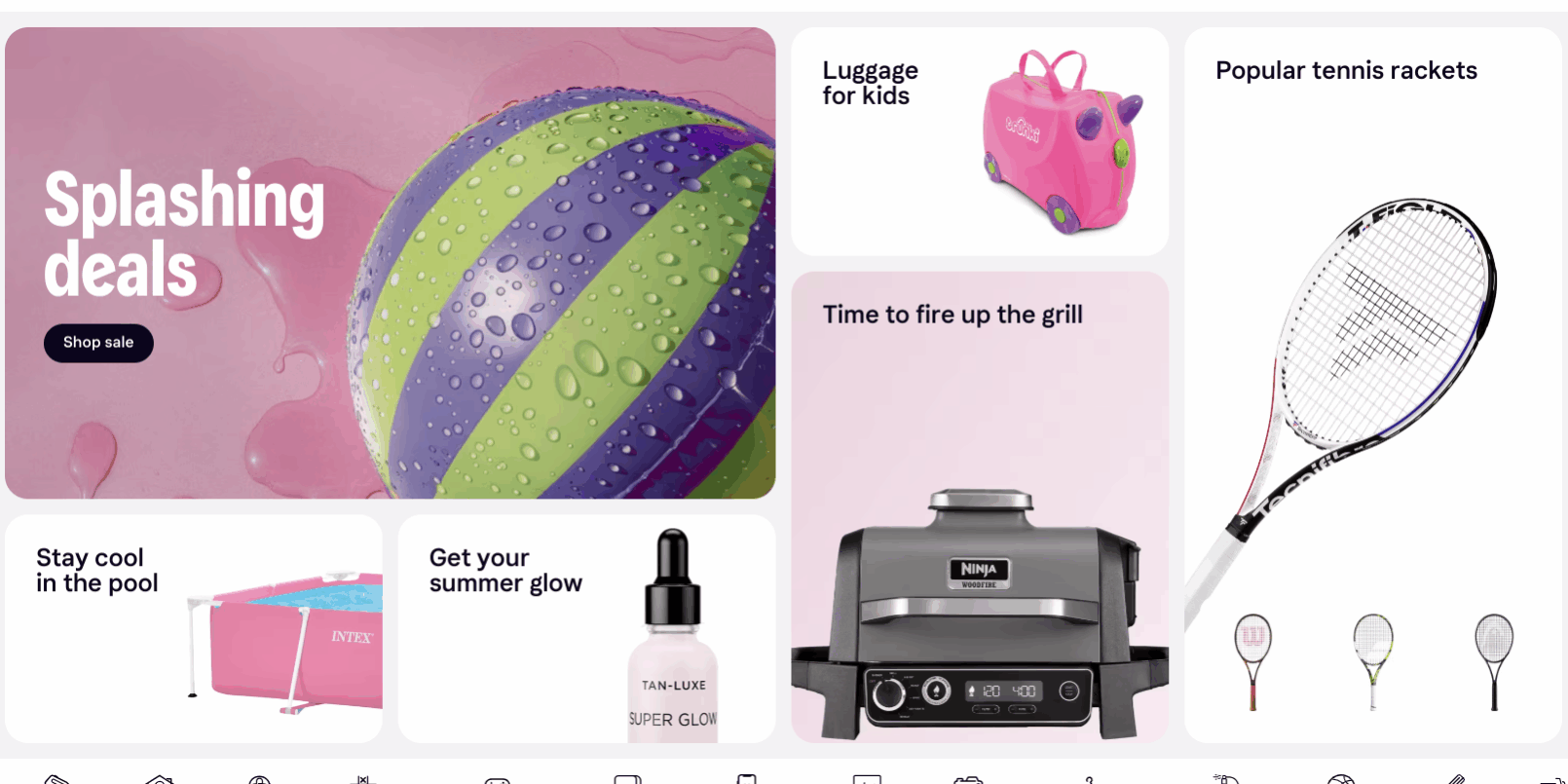Why Would You Want to Be Listed on PriceRunner?
This guide will walk you through the essentials of setting up a successful product feed for PriceRunner, discussing everything from the advantages of being listed to the specific requirements and best practices for your feed.
PriceRunner is a leading comparison shopping service that helps millions of consumers make smarter purchasing decisions. By listing your products on PriceRunner, you tap into a vast audience actively looking to buy. This exposure can lead to increased traffic and sales, as your products will be visible alongside competitors’, allowing shoppers to compare prices, features, and reviews at a glance.

Being listed on PriceRunner also enhances your online credibility. Consumers trust PriceRunner due to its comprehensive and unbiased listings, which means being featured there can elevate your brand’s reputation.
Furthermore, PriceRunner equips vendors with competitive insights that can dramatically influence marketing strategies. By analyzing which products are most frequently compared and the pricing strategies of competitors, you can make informed decisions to adjust your offerings and pricing to better meet market demands.
PriceRunner also influences not only direct sales but also brand visibility and recognition. As shoppers use this platform during the initial research phase of their buying journey, having your products listed ensures you are part of the conversation early on, potentially swaying buyer decisions and building early-stage brand loyalty.
What Are the Benefits of PriceRunner?
PriceRunner not only drives high-quality traffic to your site but also offers tools to analyze and optimize your listings. You can access detailed insights into customer behavior, which products are performing best, and where you might be losing out to competitors. This data is crucial for refining your marketing strategies and product offerings.
Additionally, PriceRunner provides a platform for receiving verified customer reviews, which can improve your service by highlighting areas for improvement and directly impacting consumer trust and decision-making. These reviews are displayed prominently and can affect the perceived reliability and quality of your products.
Moreover, PriceRunner’s influence extends beyond just the direct interactions on its platform. The data provided can inform broader marketing strategies, offering a clearer picture of market trends, consumer preferences, and effective pricing strategies. Utilizing PriceRunner effectively can lead to improved product positioning and a better understanding of the competitive landscape.
The benefits of PriceRunner extend to various types of businesses, from small startups looking to gain a foothold in the market to established brands aiming to maintain competitive advantage. By leveraging PriceRunner’s suite of features and vast consumer reach, businesses of all sizes can enhance their digital presence and sales potential.
Is It Free to Be Listed at PriceRunner?
Free listings is possible in PriceRunner, however that would result your products is without links and hence you will not get much traffic if any, so let me rephrase…
Listing on PriceRunner is not free. It operates on a cost-per-click (CPC) model, where you pay each time a potential customer clicks through to your website. The CPC rate varies depending on the category of your products, which means it’s important to balance your budget with the potential traffic and sales benefits.
Despite the costs, the investment can be worthwhile due to the targeted exposure and the tools provided by PriceRunner to optimize your sales and pricing strategy. It’s vital to consider both the immediate and long-term benefits of being listed on a major comparison site like PriceRunner. While there is a direct cost associated with each click, the broader exposure, potential for increased sales, and valuable consumer insights can outweigh the initial expenditure.
The decision to invest in PriceRunner should include an analysis of potential return on investment (ROI). By tracking the performance and conversion rates from PriceRunner clicks, businesses can effectively gauge the profitability of their listings and make data-driven decisions regarding their advertising budgets.
Who Actually Owns PriceRunner?
PriceRunner is owned by Klarna, a renowned Swedish bank that specializes in online payment solutions.
Klarna acquired PriceRunner to enhance its e-commerce ecosystem, providing consumers with seamless experiences and services that bridge shopping and finances. This backing by a major financial player ensures that PriceRunner has the resources to maintain and expand its services effectively.
The ownership by Klarna not only provides financial stability to PriceRunner but also integrates it into a broader suite of e-commerce tools and services. This relationship allows PriceRunner to benefit from Klarna’s technological expertise and innovation, potentially leading to new features and improved services for users and listed merchants alike. It positions PriceRunner to continuously evolve and adapt to changing market conditions and consumer expectations.
Furthermore, Klarna’s global reach and strong brand reputation lend additional credibility to PriceRunner, enhancing trust among consumers and businesses. This can be particularly beneficial for new or smaller retailers looking to establish themselves in competitive markets. Being associated with a well-known and trusted entity like Klarna can help in breaking down barriers to entry and gaining consumer confidence.
What Are the Requirements for Product Data in Feeds?
To be listed on PriceRunner, your product feed must meet specific requirements to ensure that all listings are detailed and helpful to consumers. The feed must include essential information such as the product name, price, category, and a link to the product page on your website. Accurate descriptions and current pricing information are crucial to maintain trust and relevancy in the listings.
PriceRunner mandates that all listed products must have clear and concise descriptions that accurately reflect the product’s features and benefits. These descriptions help consumers make informed decisions and also affect how products are indexed and displayed within the platform.
In addition to the basic details, providing high-quality images and up-to-date inventory information is essential. This not only helps in presenting your products in the best possible light but also reduces the likelihood of customer disappointment due to out-of-stock situations. Ensuring that your feed is regularly updated to reflect any changes in price, availability, or product specifications is crucial for maintaining a positive user experience and compliance with PriceRunner’s standards.
Product Feed Tips for PriceRunner Feeds?
What Attributes Are Required in the Feed?
The basic attributes required in every PriceRunner feed include the product identifier (SKU), name, price, product URL, image URL, category, and shipping cost. These are crucial for the feed because they provide the fundamental details needed for PriceRunner to list and compare products effectively.
To ensure maximum visibility and effectiveness of your listings, it’s important to provide comprehensive and accurate product data. The SKU should be unique to each item, enabling easy tracking and management. The product name should be clear and include key details that might be searched by consumers, such as brand, model, or specific features.
Basic Attributes (Minimum Requirements)
- SKU/ID
- Name
- Price
- Shipping Cost
- Stock Status
- Delivery Time
- Brand
- GTIN/EAN
- Manufacturer SKU / MPN
- URL
- Image Link
- Category
- Product Description
- Condition
Basic Attributes
SKU/ID Use SKU (Stock Keeping Unit) as the unique identifier for your products whenever possible. Each product in the feed must have its own unique SKU to ensure proper display in search results.
- Good SKU: ABC123
- Bad SKU: 1
Name Clearly specify each variant or model of your product in your product feed. PriceRunner’s search engine and filters use the information in this field. Ensure to include keywords that you want to be found for.
- Good product name: Apple iPhone 12, 256GB, grey
- Bad product name: iPhone 12
Your product name will be used to match your product with ours and the user’s specific search. Include key details that define your product.
- Unique name for each product, no identical names
- No non-alphabetical characters
- Place the most important details first. Visitors typically see the first 70 characters (or fewer) of your title depending on screen size.
- Use keywords. Keywords can help our systems match your product to user searches, making it clear to the user what you are selling. Your keywords can include product information such as: Product name
Brand Specific product information However, do not include information about discounts, sales, stock status, or delivery time in the product name. You can specify these elsewhere in the feed. Example: Adidas
Price The price of your product including VAT. Currency should be specified in the field. Use either comma (,) or period (.) as the decimal separator.
- Good price: 250 DKK
- Bad price: 250 excluding VAT
Quantity discount prices are not accepted. It should generally be the unit price of the item included in your product feed, so the price in your product feed matches what the customer sees in the cart at checkout.
Sale Price The discounted price of the item including VAT. Currency should be specified in the price field. Use either comma or period as the decimal separator.
Leave the Sale_Price field blank if the item is not on sale. A value in this field will override the original price in the price field.
You can include the feed attribute <sale_price_effective_date> to specify the period during which the discounted price is valid.
Membership Prices The membership price of the item including VAT. Currency should be specified in the price field. Use either comma or period as the decimal separator.
PriceRunner only display membership prices if membership is free and without monthly fees. This could be, for example, signing up for a newsletter or customer club where membership is free.
Delivery Cost The delivery cost of the product. The price you specify should include all delivery/ordering costs for the consumer. For example, environmental surcharge, freight surcharge, handling fee, packaging fee, etc.
- Example: 39 DKK
Stock Status As a rule, there should be a buy/order button on the product on your website so the consumer can purchase the item or place an order for your product to appear in comparison.
However, PriceRunner allow chain stores to display their offline prices as long as the product is in stock and available for purchase in their physical stores, but the product must still be indicated as “Out of Stock” in the product feed.
If the product cannot be purchased/ordered online or offline, it should not be included in your product feed.
PriceRunner do not differentiate between whether the product is in a local warehouse or a remote warehouse. Your stock status in the product feed should always be based on your online stock status, so you cannot display stock status for one of your physical stores.
Products that require pre-ordering cannot be listed as “In Stock”. Here you should indicate “PreOrder” or “Out of Stock” in your product feed.
For example, you can indicate stock status as “In Stock” / “Out of Stock” or Yes/No or number of products in stock.
Good stock status: Yes, No, InStock, OutofStock, PreOrder, 100 Bad stock status: Few or N/A
Delivery Time The delivery time you promise your customer, from the customer’s order time indicated in number of days. It’s important that the delivery time in your product feed matches what you state on your website.
Good delivery time: 2-5 days Bad delivery time: Varies
Brand The manufacturer of the item. This information is used in the filters that our visitors can use in the categories.
Example: Adidas
Manufacturer SKU/MPN The manufacturer’s unique item number. PriceRunner can use this information to match products for comparison.
Use the SKU provided and assigned by the manufacturer. Unless you are the manufacturer of the item, do not enter a value you have created. Distinguish between different variants and use the correct MPN specification for each product variant. Typically, each variant of a product (different colors or sizes) has its own Manufacturer SKU, so double-check that you are submitting the correct value in the feed. An exception is different clothing sizes, where all sizes often have the same Manufacturer SKU/MPN. Example: 1170-0500
GTIN/EAN The item’s EAN code and unique barcode number. PriceRunner use the item’s EAN number to automatically match your products for price comparison and to make the products searchable with the barcode reader in our app.
Example: 0021299147573
URL URL to the product on your website. The URL to your website can also include UTM parameters so you can see in Google Analytics or other analytics tools where your website traffic is coming from.
Example: https://www.yourstore.com/product1.html
Image Link URL to the product’s image on your site. Use a static URL. The image link you use in your product feed should not change unless the image itself is replaced or gets an entirely new URL structure on your end.
Preferred images between 700×700 and 2000x2000px No watermarks on images No placeholder images Use specific images per color variant. Therefore, avoid using image links with timestamps, cache values, or other information that may change every time you generate and update feed data. Changing an image link means we have to download and reprocess the image in our system. The CMYK format is not supported.
Example: https://www.yourstore.com/product1.jpg
Category Use the full breadcrumb trail for the product on your website. Where possible, PriceRunner recommend including more detailed categories, as this helps us process your products more accurately. For example, Shoes > Sports Shoes > Running Shoes.
Make sure not to mix different types of products within your categories. For example, place accessories for a coffee machine in their own category rather than in the same category as the coffee machines.
Use the > character to separate different levels in a category. Make sure to use spaces both before and after the > symbol. For example, Clothing > Women > Skirts.
For gender-specific products (e.g., clothing and perfumes), it’s important to divide your products into Women, Men, and Kids. Our filters partly rely on your category designation.
Good category name: Clothing > Women > Pants Bad category name: Fashion & Clothing
Product Description Detailed information about your product. The more relevant specifications about the product, the better. Our search engine and filters use the information in this field. Be sure to include the keywords you want to be found for. Maximum 30 words.
Good product description: Red table with four legs and storage underneath. Ideal for living room and bedroom. Dimensions 100 x 50 cm. Bad product description: Really smart and practical!
Condition Use the attribute to specify the condition of the item at the time of purchase. PriceRunner supports the following values:
New – The item is brand new, in its original packaging, and has never been opened/used. With full manufacturer’s warranty and standard return policy. Used – The item is used. It could be a display model/demo item or because the packaging is damaged or completely missing. Refurbished – The item is not new but has been inspected and tested to ensure it feels like a new product. Defective parts have been replaced, but the item may still show signs of use. The item may be delivered with or without its original packaging.
What Detailed Attributes Can Be Used?
In addition to the basic attributes, PriceRunner allows and encourages the use of detailed attributes like brand, manufacturer, EAN (if applicable), stock status, and promotional messages. These attributes can enhance the product’s visibility and attractiveness, helping consumers make informed decisions based on a comprehensive set of data.
Adding detailed attributes such as color, size, material, and other relevant specifications can significantly improve the user experience by providing more specific information that can help in the decision-making process. Promotional messages or special offers can also be included to attract more attention and encourage quicker purchasing decisions.
What Formats Can Be Used in Feeds for PriceRunner?
PriceRunner supports several feed formats, with XML and CSV being the most commonly used. These formats are flexible and allow for easy integration of various data types, ensuring that your product information is transmitted accurately and efficiently.
Choosing the right format depends on your technical capabilities and the complexity of your product data. XML is suitable for more complex feeds with nested data, while CSV is straightforward and easier to handle for simpler product catalogs.
Encoding and Headers in Feeds
The encoding of your feed should be UTF-8 to ensure that all characters in your product information are displayed correctly. Proper headers are also crucial for organizing the data and making sure that PriceRunner’s system can interpret each piece of information correctly.
Proper encoding avoids technical issues related to character misrepresentation, which can be critical for maintaining the integrity of your product data, especially if it includes special characters or non-English text. Headers help structure the data clearly, making it easier for PriceRunner’s algorithms to accurately process and list your products.
We Solve All the Troubles of a PriceRunner Feed as We Are Preferred Partners with PriceRunner
As preferred partners with PriceRunner, we specialize in simplifying the process of creating and managing your product feed. We handle all the technical details, ensuring that your feed meets all requirements and is optimized for the best performance on PriceRunner. With our expertise, you can focus on what you do best—running your business and serving your customers—while we make sure your products gain maximum visibility and attractiveness on one of the leading price comparison websites in the market.
Leveraging our partnership with PriceRunner, we offer tailored solutions that address the unique challenges and opportunities of your business. From setting up the initial product feed to ongoing management and optimization, our team is equipped to handle all aspects of PriceRunner integration. This includes regular updates to your feed to reflect product changes, seasonal promotions, and pricing adjustments, ensuring that your listings are always accurate and compelling.
Furthermore, our services extend beyond just feed management. We provide comprehensive analytics and reporting that help you understand the performance of your listings, identify trends, and make informed decisions to enhance your sales and marketing strategies. Our goal is to make your experience with PriceRunner as effective and hassle-free as possible, allowing you to reap the maximum benefits from your investment in this powerful marketing tool.






